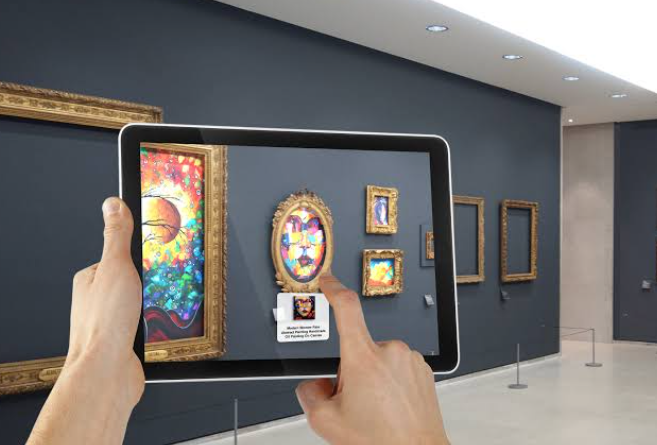Understanding Augmented Reality (AR)
As we hurtle into the future, technological advancements are increasingly influencing every facet of our lives — and the art world is no exception. Among the myriad of innovations, Augmented Reality (AR) stands out as one of the most transformative tools for artists and curators alike. It enhances, alters, and even redefines the boundaries of traditional art. The Art Newspaper frequently discusses such technological shifts and their impact on the art scene. In this article, we delve deep into the role of AR in modern art displays and how it’s revolutionizing the way we perceive and interact with art.
Before exploring its implications in art, it’s essential to grasp what AR is. In simple terms, Augmented Reality overlays digital information — be it images, sounds, or 3D models — onto the real world. This is typically achieved using smartphones, tablets, or specialized AR glasses. AR Insider, a leading source on the topic, offers deep insights into the evolution and potentials of this technology.
AR in Modern Art: A Paradigm Shift
- Interactive Installations: Museums and art galleries are employing AR to transform passive art-viewing into an interactive experience. For instance, a painting can come alive, revealing the artist’s process through time-lapsed visuals or showcasing historical context.
- Enhanced Storytelling: Traditional art forms like sculptures and paintings can be paired with AR narratives. Imagine observing a sculpture while your AR device plays out a relevant historical scene, adding depth to the artwork’s backstory.
- Personalized Experiences: AR can tailor the art viewing experience based on user preferences. For instance, an art display might change its colors or exhibit different patterns depending on the viewer’s mood or past interactions.
- Art Creation: Artists now use AR as a medium in itself. It’s not just about displaying art; it’s about creating with AR. Digital sculptures, interactive murals, and more are possible, allowing for dynamic pieces that evolve over time or with viewer interaction.
The Confluence of AR and Traditional Art Mediums
Interestingly, AR has found a place not just in high-tech modern installations but also in enhancing traditional art forms. For example, metal prints — durable, vivid representations of digital art — can serve as AR triggers. A viewer, pointing their AR-enabled device at a metal print, might see the artwork animate or reveal a 3D extension, literally “jumping” off the wall. Such a blend leverages the tangible beauty of a medium like metal prints while harnessing the dynamism of AR. Smithsonian Magazine has highlighted instances where traditional and modern mediums converge in surprising, delightful ways.
Challenges and Criticisms
As with any technological advancement, AR’s integration into the art world isn’t without its critics.
- Authenticity Concerns: Purists argue that AR might detract from the raw experience of art, adding unnecessary flair and reducing the emphasis on skill and technique.
- Accessibility: While AR is fascinating, it requires viewers to have specific devices or apps, which might alienate some audience segments.
- Overemphasis on Tech: There’s a genuine concern that the “wow” factor of AR might overshadow the art itself, turning galleries into tech demos rather than spaces of artistic contemplation.
Future of AR in Art
Despite the challenges, it’s undeniable that AR is here to stay. As technology becomes more seamless and integrated, we can expect:
- Global Art Collaborations: Artists from different parts of the world can collaborate in real-time, creating AR art pieces that evolve and change based on input from multiple creators.
- Art Education: AR can play a pivotal role in art education, offering interactive lessons on art history, techniques, and more.
- New Art Genres: Just as we’ve seen with digital art, AR might spawn entirely new genres of art, pushing the boundaries of what’s possible and what’s considered “art.”
Conclusion
AR’s incorporation into the art world exemplifies the timeless dance between technology and creativity. As artists, curators, and technologists experiment and collaborate, we stand at the cusp of an art revolution. Whether you’re a traditional art aficionado or a tech enthusiast, the melding of AR with art promises a richer, more immersive, and multi-dimensional experience, ensuring art remains a dynamic reflection of humanity’s ever-evolving narrative.
